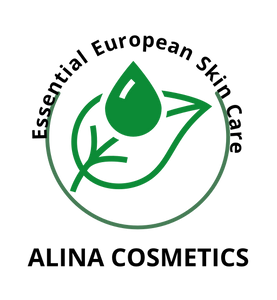Natural Way of Hair Care
The basics of hair care
In the case of hair care - as well as the face - it is equally important to provide a variety of active substances so that the hair remains smooth and shiny, but at the same time does not look greasy or sticky. It is important not only to cleanse them but also to moisturize and protect them against external factors.
The basis of hair care is washing with shampoo, using a conditioner, mask, and serum which protects ends.
When choosing your shampoo always consider your hair type. Some shampoos are specially formulated for oily or greasy hair, while others may work better on dry hair. If your hair is color-treated or chemically straightened or curled you should try to find a shampoo that is safe to use on chemically treated hair. Always try to choose a shampoo that doesn’t dry out the hair, the higher the moisture content the more effective it will be at decreasing flakiness on your scalp.
If you have specific scalp or hair issues, for example, seborrheic dermatitis, psoriasis, folliculitis or hair loss - your hair care product selection should be consulted with the medical professional and the shampoo and conditioner may be on prescription.
For very dry hair and problems with scalp, eczema, and irritated skin, try to switch to natural hair care products.
Conventional hair care products available on the market, have too many ingredients that would dry out your hair and scalp and it would make your condition worse.
A common ingredient in many shampoos and conditioners, sodium lauryl sulfate has been found to reduce the thickness and dry out the skin.
Compound starting with butyl-, propyl-, ethyl- or methyl- are normally parabens that are major irritants of the skin and are even known to cause certain cancers.
Fragrances added to shampoos to make them more appealing often leech into the scalp causing more flakiness and red areas of irritated skin.
Avoid shampoos that use alcohol as an agent, as alcohol will strip away natural oils found in your scalp and result in more dryness or itching.
Natural shampoos are designed to work with your scalp’s natural pH to avoid more irritation to the scalp.
Variety care to provide a variety of active substances:
- 1 - 2 x weekly a mask in exchange for a conditioner.
- Hair oiling (every 2-3 washes, you can apply a humectant moisturizing foundation *).
- 1 - 2 x monthly peeling of scalp.
- Masks before washing your hair (as needed).
- Vinegar rinse (as needed).

Hair Oiling
A treatment that involves applying oil to hair before washing to nourish and shine. The systematic use of oils for hair reduces their static electricity, makes combing easier and makes them more resistant to injuries. The Indian hair care secret is oiling hair. Hindu women's shiny hair is not just a matter of genes!
How to do oiling treatment?
1. The oil can be applied to dry or wet hair, depending on their preferences (for beginners we recommend the "dry" method).
2. Separate the hair into 2 equal strands on both sides of the head.
3. If you are going to do oiling on a humectant moisturizing foundation *, rub it in your hands and apply it to the hair (from ear to tip).
4. Then apply the oil in the same way.
5. Leave the mixture on your hair for a minimum of 30 minutes.
Our SYLVECO high-quality shampoos and conditioners are sulfate-free, hypoallergenic, cruelty-free. Perfect for the problematic scalp and weak hair.

Vinegar Lotion
Hair likes the low pH of cosmetics - under its influence, the hair scales close, making them smooth and shiny! However, low pH is not conducive to the scalp - which is why most cosmetics that may come into contact with the skin, such as shampoos and conditioners, have a physiological, slightly acidic pH.
The preparation with a more acidic pH (and thus having better smoothing and polishing properties) can be made independently - for this purpose we provide a recipe for vinegar rinse :
- Add 1.5-5 tablespoons apple cider vinegar to 1.5-2 liters.
- After washing the hair and rinsing the conditioner, rinse it again, but this time with a prepared mixture of apple cider vinegar.
- Finally, don't rinse your hair with water anymore!
Scalp Peeling
The skin on the scalp behaves the same as in other parts of the body - it also keratinizes and exfoliates the skin. However, this process is sometimes hampered by care errors or the use of styling cosmetics - so to remove callous epidermis cells and thus allow better penetration of active substances into the skin and hair bulbs, we recommend systematic peeling of the scalp!
How to perform the procedure?
1. Tilt your head down and rinse your hair thoroughly with water.
2. Take a small amount of peeling on the fingertips, then massage the scalp with it.
3. Repeat the procedure until the peeling evenly applied throughout the scalp.
4. After the massage, hold the peeling on the skin for about half a minute.
5. Rinse the scrub with water, then proceed to wash your head.
Scalp peeling can also be done with the help of semi-finished products available in the kitchen - sugar (especially cane!) Or salt - added to a portion of shampoo.
_____
* Humectant moisturizing foundation - e.g. glycerin, hyaluronic acid, aloe vera gel, linseed gel, water with sugar, honey.
